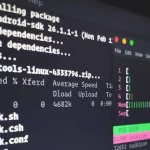
How To Use Bashrc File
Introduction
If you have been the usage of linux for some time and specially in case you are starting to get acquainted with the linux command line you may recognise that bash is a linux shell.
Bash stands for bourne again shell. There are a number of exceptional shells including csh, zsh, dash and korn.
A shell is an interpreter which could take delivery of instructions for a user and run them to perform operations which include navigating round a document system, jogging applications and interacting with devices.
Many debian based linux distributions inclusive of debian itself, ubuntu and linux mint use sprint as a shell as opposed to bash. Dash stands for debian almquist shell. The dash shell could be very just like bash but it is a lot smaller than the bash shell.
Regardless as to whether you are the use of bash or dash you may have a record called .Bashrc. In truth you may have multiple .Bashrc files.
Open a terminal window and kind within the following command:
Sudo find / -call .Bashrc
After I run this command there are three consequences returned:
- /and many others/skel/.Bashrc
- /home/gary/.Bashrc
- /root/.Bashrc
The /and many others/skel/.Bashrc report is copied into the house folder of any new customers which might be created on a machine.
The /home/gary/.Bashrc is the record used on every occasion the user gary opens a shell and the basis document is used every time root opens a shell.
What is the .Bashrc report?
The .Bashrc report is a shell script which is run whenever a person opens a new shell.
As an example open a terminal window and input the following command:
Bash
Now in the same window input this command:
Bash
Whenever you open a terminal window the bashrc report is executed.
The .Bashrc file is a great location therefore to run instructions that you need to run every single time you open a shell.
For example open the .Bashrc record the use of nano as follows:
Nano ~/.Bashrc
On the cease of the record enter the subsequent command:
Echo "howdy $user"
Shop the report by way of pressing ctrl and o after which go out nano through urgent ctrl and x.
Within the terminal window run the subsequent command:
Bash
The phrase “hello” have to be displayed at the side of the username you’re logged in as.
You can use the .Bashrc file to do whatever you want and certainly on this guide i confirmed you a way to display machine data the usage of the screenfetch command.
The usage of aliases
The .Bashrc document is commonly used to set aliases to usually used commands so you don’t need to don’t forget long commands.
A few people do not forget this a horrific aspect due to the fact you could neglect how to use the real command whilst placed on a machine wherein your personal unique .Bashrc file would not exist.
The reality is however that each one of the commands are conveniently to be had on-line and within the man pages so i see adding aliases as a fine as opposed to a poor.
If you study the default .Bashrc file in a distribution along with ubuntu or mint you may see some aliases already installation.
For example:
Alias ll='ls -alf' Alias los angeles='ls -a' Alias l='ls -cf'
The ls command is used to list the files and directories in the record machine.
If you read this guide you may find out what all the switches imply whilst you run the ls command.
The -alf approach that you’ll see a record list show all documents which includes hidden documents which can be preceeded with a dot. The record listing will encompass the author’s name and every document type might be classified.
The -a switch really lists all files and directories but it omits the .. Document.
Ultimately the -cf lists entries by way of column along side their category.
Now you may at any time enter any of these instructions direct right into a terminal:
Ls -alf Ls -a Ls-cf
As an alias has been set inside the .Bashrc report you can actually run the alias as follows:
Ll L. A. L
In case you discover yourself jogging a command frequently and it’s far a fairly long command it is probably well worth adding your own alias to the .Bashrc document.
The format for alias is as follows:
Alias new_command_name = command_to_run
Basically you specify the alias command after which give the alias a name. Then you definitely specify the command you wish to run after the equals signal.
As an example:
Alias up='cd ..'
The above command helps you to move up a listing sincerely with the aid of getting into up.
Recap
The .Bashrc record is a totally effective tool and is a exceptional manner to customise your linux shell. Utilized in the appropriate way you’ll boom your productiveness ten fold.






